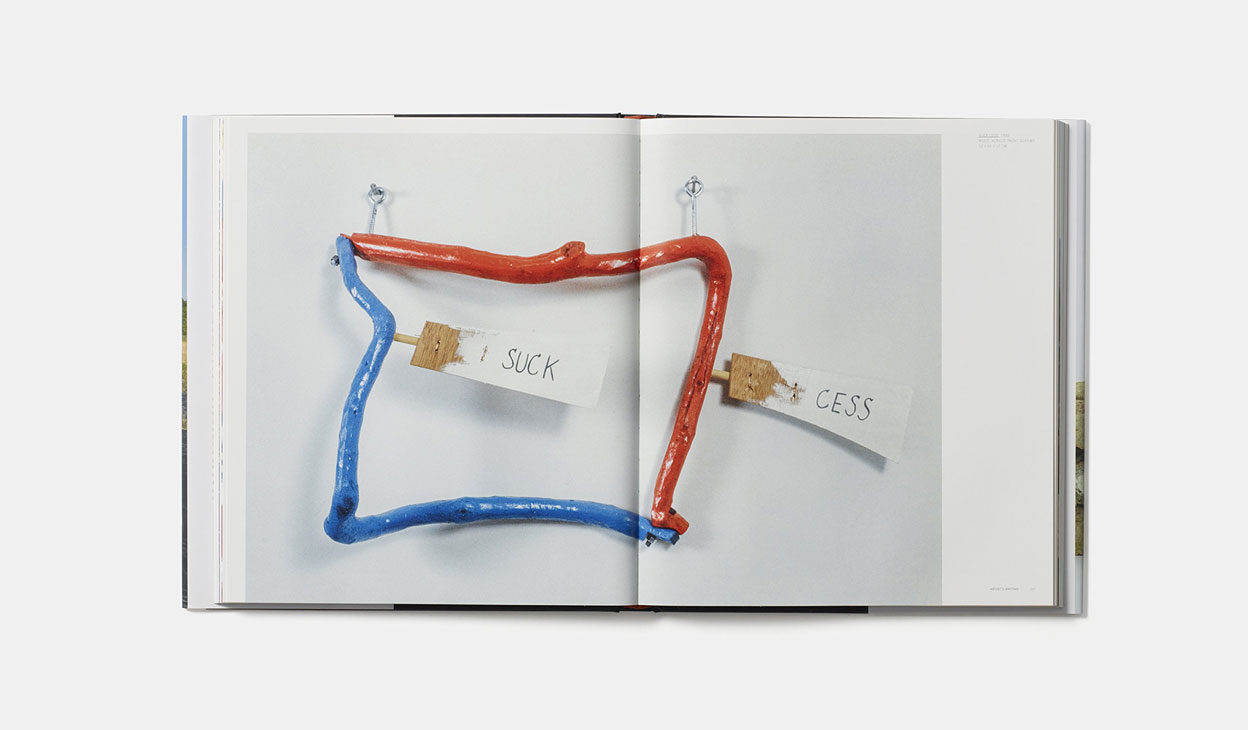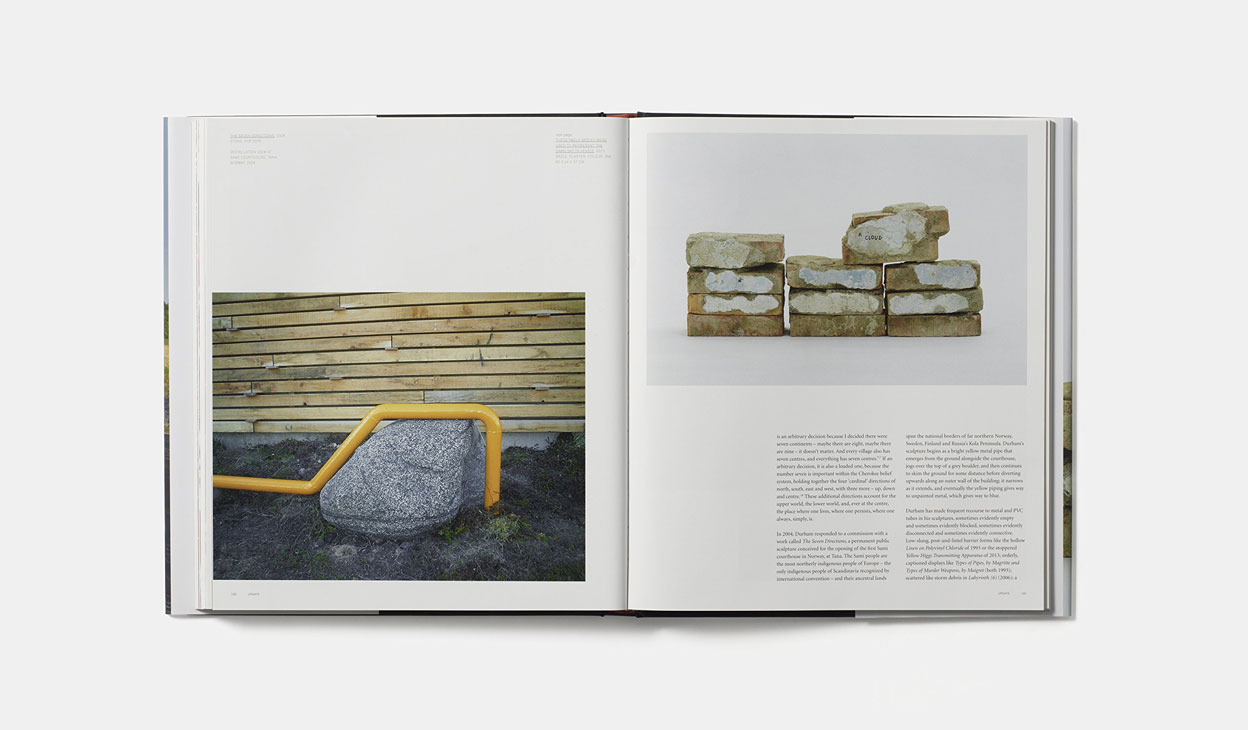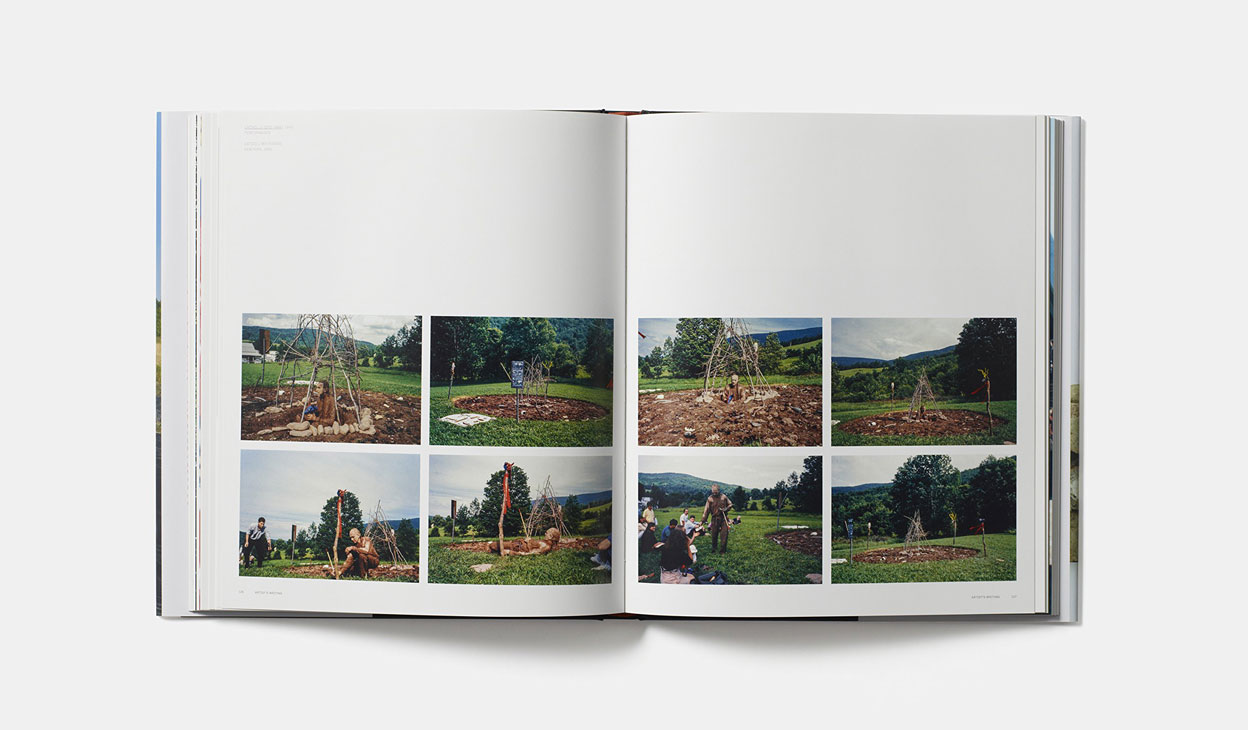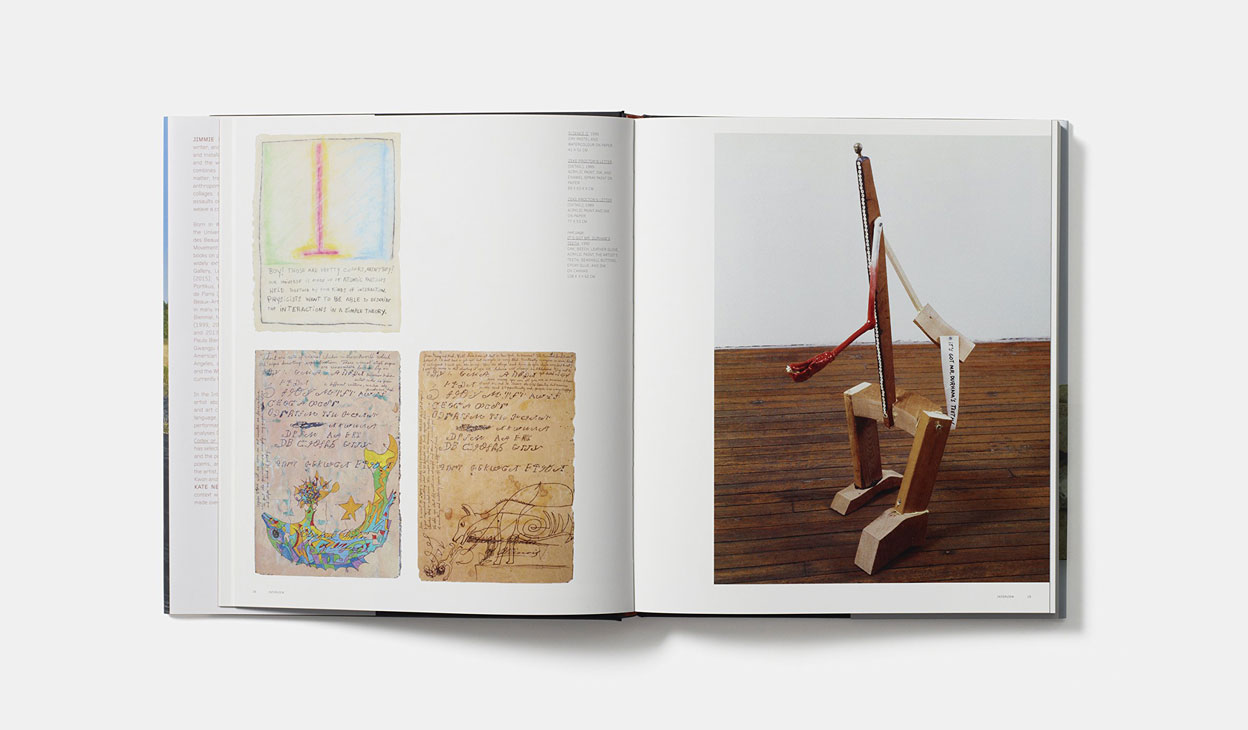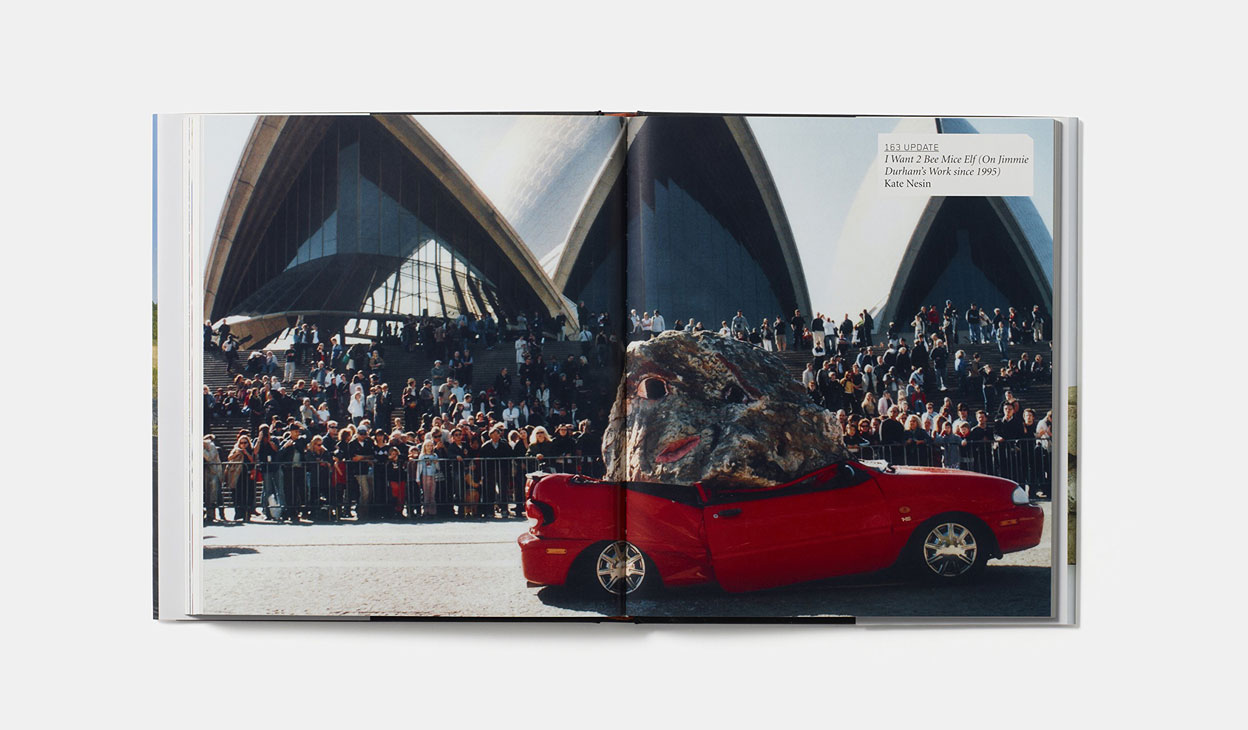BOOK:Jimmie Durham-Revised and Expanded Edition,Phaidon Publications
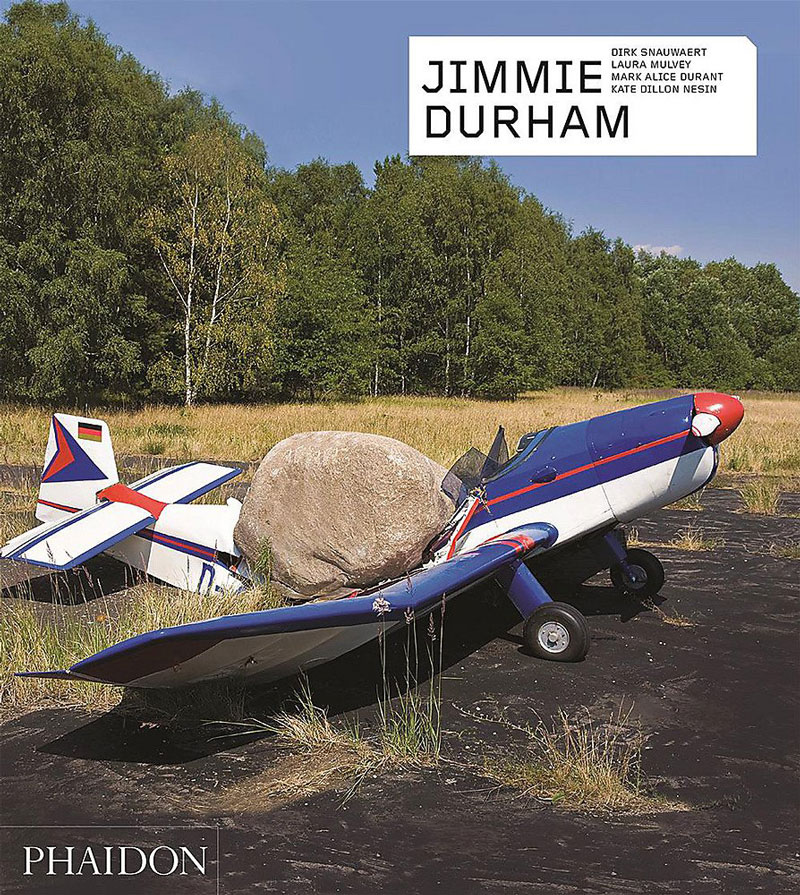 Twenty years ago, Phaidon published what has become the definitive study of Arkansas-born Jimmie Durham’s career. This highly anticipated new edition brings this important book up to date, tracing his remarkable life from his experiences in the US, Mexico, and Europe – including his early involvement with the American Indian Movement-to his most recent output. It presents a full assessment of his sculptures, performances, wall-based collages, and ersatz ethnographic displays, that deliver ironic assaults on the colonizing procedures of Western culture. Although Durham is not a recognized member of the Cherokee tribe, he self-identifies as a Cherokee, and much of his artistic practice deals with issues of colonialism and Native American identity. In his artistic research, Jimmie Durham is interested in what happens “away from language”, in the relationship between forms and concepts. Working against Western rationalism, his practice is rooted in uncertainty and paradox. Durham creates in an array of mediums: drawings, installations, video (which he uses to document his performances), and sculptural constructions often combined with written messages, photographs, and objects. Covering a broad range of topics in artworks as well as in essays and poetry, his production is often laced with the agility of wordplay, a dry, highly critical humor and, above all, insight. He consistently addresses the political and cultural forces that construct our contemporary discourses, the history of oppression, the futility of violence, and the powerlessness of the minorities in the world. Jimmie Durham works with both natural and artificial materials, but he is particularly drawn to the intrinsic qualities of those that have been used throughout history as tools: stone, wood, bone, iron and glass. Stone is a primary material for Durham due to its role in defining power dynamics of culture and society through architecture and ideas of monumentality; He uses it to underscore the polemics of nature vs. culture, religion, architecture, and Eurocentric ideas of history.-Efi Michalarou
Twenty years ago, Phaidon published what has become the definitive study of Arkansas-born Jimmie Durham’s career. This highly anticipated new edition brings this important book up to date, tracing his remarkable life from his experiences in the US, Mexico, and Europe – including his early involvement with the American Indian Movement-to his most recent output. It presents a full assessment of his sculptures, performances, wall-based collages, and ersatz ethnographic displays, that deliver ironic assaults on the colonizing procedures of Western culture. Although Durham is not a recognized member of the Cherokee tribe, he self-identifies as a Cherokee, and much of his artistic practice deals with issues of colonialism and Native American identity. In his artistic research, Jimmie Durham is interested in what happens “away from language”, in the relationship between forms and concepts. Working against Western rationalism, his practice is rooted in uncertainty and paradox. Durham creates in an array of mediums: drawings, installations, video (which he uses to document his performances), and sculptural constructions often combined with written messages, photographs, and objects. Covering a broad range of topics in artworks as well as in essays and poetry, his production is often laced with the agility of wordplay, a dry, highly critical humor and, above all, insight. He consistently addresses the political and cultural forces that construct our contemporary discourses, the history of oppression, the futility of violence, and the powerlessness of the minorities in the world. Jimmie Durham works with both natural and artificial materials, but he is particularly drawn to the intrinsic qualities of those that have been used throughout history as tools: stone, wood, bone, iron and glass. Stone is a primary material for Durham due to its role in defining power dynamics of culture and society through architecture and ideas of monumentality; He uses it to underscore the polemics of nature vs. culture, religion, architecture, and Eurocentric ideas of history.-Efi Michalarou
